|
||||||||||||||||||||||
![Home - Air Power Australia Website [Click for more ...]](APA/APA-Title-Main.png) |
||||||||||||||||||||||
![Sukhoi PAK-FA and Flanker Index Page [Click for more ...]](APA/flanker.png) |
![F-35 Joint Strike Fighter Index Page [Click for more ...]](APA/jsf.png) |
![Weapons Technology Index Page [Click for more ...]](APA/weps.png) |
![News and Media Related Material Index Page [Click for more ...]](APA/media.png) |
|||||||||||||||||||
![Surface to Air Missile Systems / Integrated Air Defence Systems Index Page [Click for more ...]](APA/sams-iads.png) |
![Ballistic Missiles and Missile Defence Page [Click for more ...]](APA/msls-bmd.png) |
![Air Power and National Military Strategy Index Page [Click for more ...]](APA/strategy.png) |
![Military Aviation Historical Topics Index Page [Click for more ...]](APA/history.png)
|
![Intelligence, Surveillance and Reconnaissance and Network Centric Warfare Index Page [Click for more ...]](APA/isr-ncw.png) |
![Information Warfare / Operations and Electronic Warfare Index Page [Click for more ...]](APA/iw.png) |
![Systems and Basic Technology Index Page [Click for more ...]](APA/technology.png) |
![Related Links Index Page [Click for more ...]](APA/links.png) |
|||||||||||||||
![Homepage of Australia's First Online Journal Covering Air Power Issues (ISSN 1832-2433) [Click for more ...]](APA/apa-analyses.png) |
||||||||||||||||||||||
| Last Updated: Wed Jan 28 12:28:15 UTC 2015 | ||||||||||||||||||||||
|
||||||||||||||||||||||
|
Zhuhai
2014
PLA Aircraft and PGMs |
Photographic Essay APA-PE-2015-0101  by David Bignell 28th January, 2015 Text and lineart © 2015 Carlo Kopp Photographic images © 2014-2015 David Bignell |
|
Shenyang
J-31 multirole fighter aircraft.
|
|
The annual Zhuhai aerospace exhibition and trade show has become arguably the primary venue for China's rapidly growing military aerospace industry to showcase its numerous products, or proposed products. UK photographer David Bignell visited the 2014 Zhuhai event and produced a collection of professional quality imagery, using a Canon EOS70D DSLR, with the Canon EF 70-300mm f/4-5.6L IS USM lightweight telephoto, and Canon EF-S 18-55mm f/3.5-5.6 IS STM utility zoom. Notable at the 2014 airshow were the Y-20 and Y-9 airlifters, the J-31 fighter, the visiting Russian Su-35S FLANKER, and the wide range of Precision Guided Munitions (PGM) and unguided munitions, some seen previously, some not. Over the last decade we have observed unprecedented growth in the diversity and capability of Chinese developed and built PGMs and unguided munitions. Even if we account for the propensity of Chinese industry to display demonstrators, prototypes and concept mockups at trade shows, in addition to production munitions, there is little doubt that Chinese industry is aiming to become a major provider in the global PGM market. Current Chinese industry offerings in PGMs alone span the full gamut of capabilities offered by US, EU, and Russian industry, with many designs modelled on US/EU products, and many directly derived from Russian products. Notably these offerings are "ITAR-free" products and not subject to the restrictive, non cost-effective, falsely expensive and non-competitive nature of this antiquated Cold War based control regime. While in the West ITAR is often exploited to drive up the cost of military exports, to increase profit margins at taxpayer's expense, China without such controls can manufacture and export cheaply, following a commercial model, and is set to displace Russia as the primary supplier of PGMs compatible with Soviet/Russian technology platforms, be they of Chinese, Russian or Ukrainian origin. Notes:
|
|
Shenyang J-31 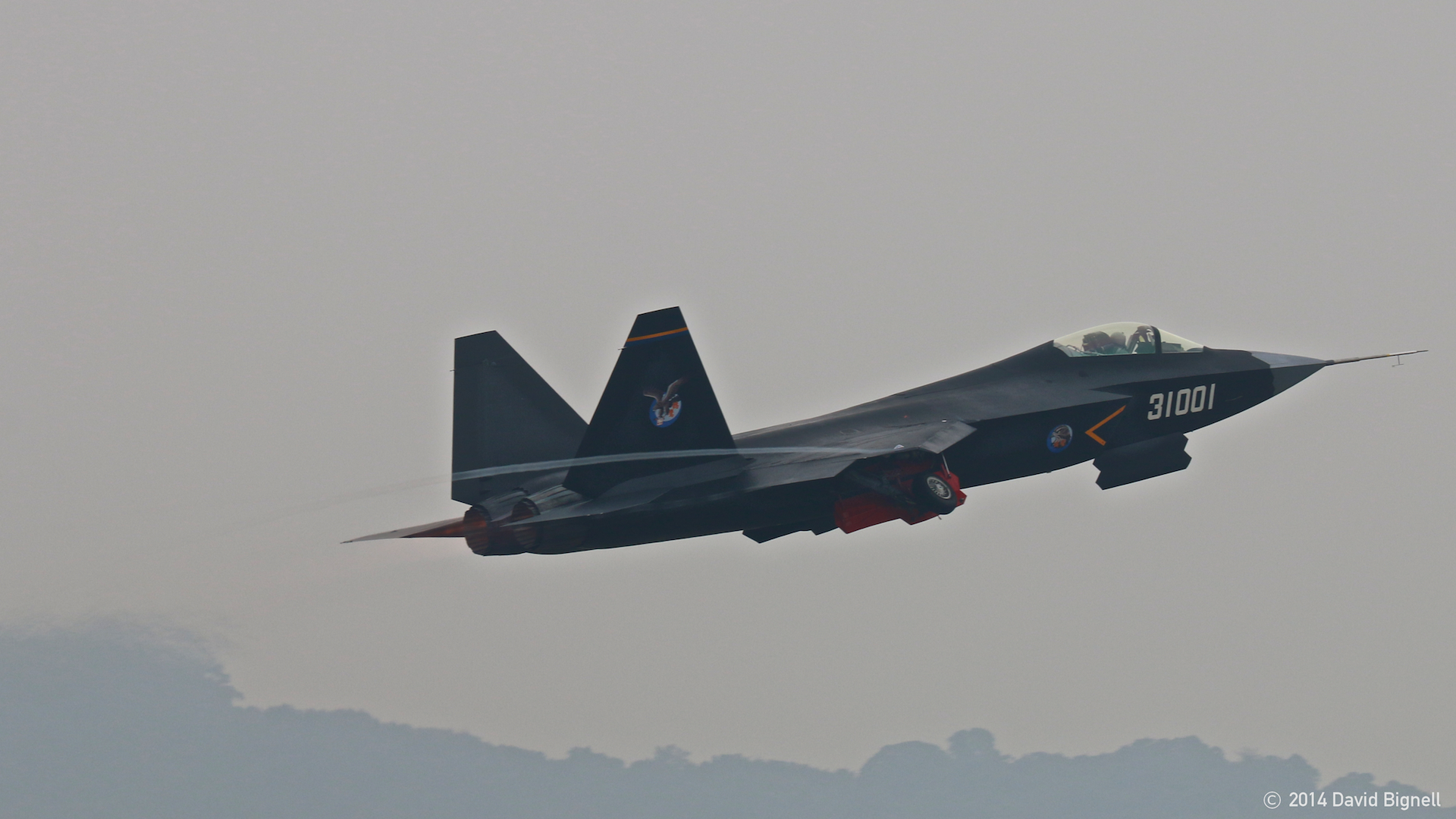 This is a prototype of the J-31,
China's second known low observable tactical fighter. While Western
media like to equate it to the F-35 JSF in the belief this aircraft has
its origins in the terabytes of data reportedly obtained by
cyber-hacking US defence contractor networks in 2007, the truth is
quite different. The J-31 is a twin engine design in which the
planform, shaping, aerodynamics and airframe configuration are
fundamentally different, and clearly modelled on the F-22A Raptor. This reflects the strategy
pursued by the Soviets during the 1970s in developing the MiG-29
FULCRUM around the basic configuration of the MDC F-15A, rather than
the GDC F-16A.
   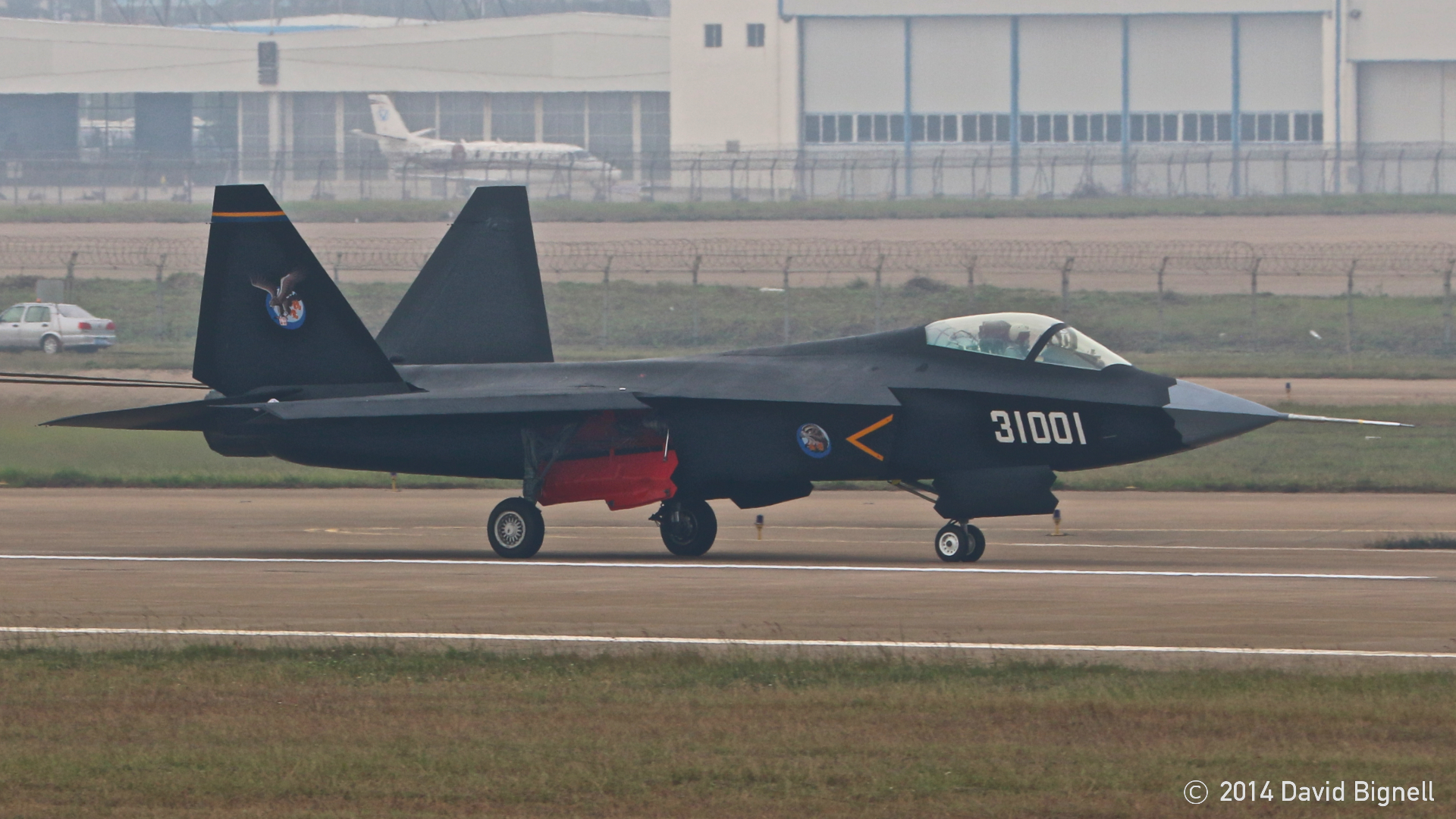 |
|
Sukhoi Su-35S FLANKER 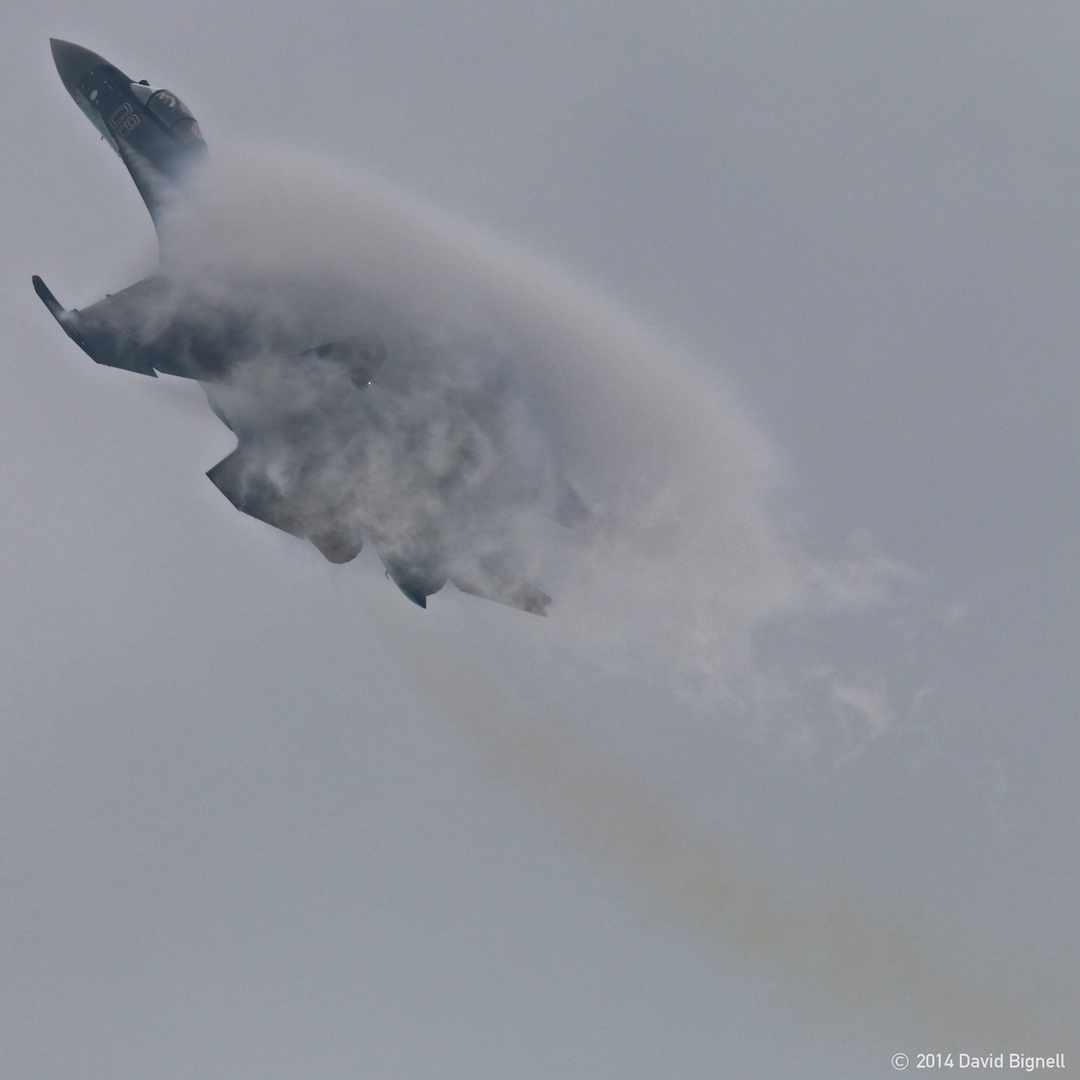 Russia has recently agreed to
export
the new
build Su-35S [Su-35BM/Su-27M2]
“Super Flanker” to China. This aircraft is a substantial redesign of
the legacy FLANKER airframe, with new supersonic cruise capable 3D TVC
Al-41F1A engines, an entirely new digital avionic suite, and a range of
new weapons. Notable is the resculpted nose and radome, and the
recently introduced two-tone tactical camouflage.
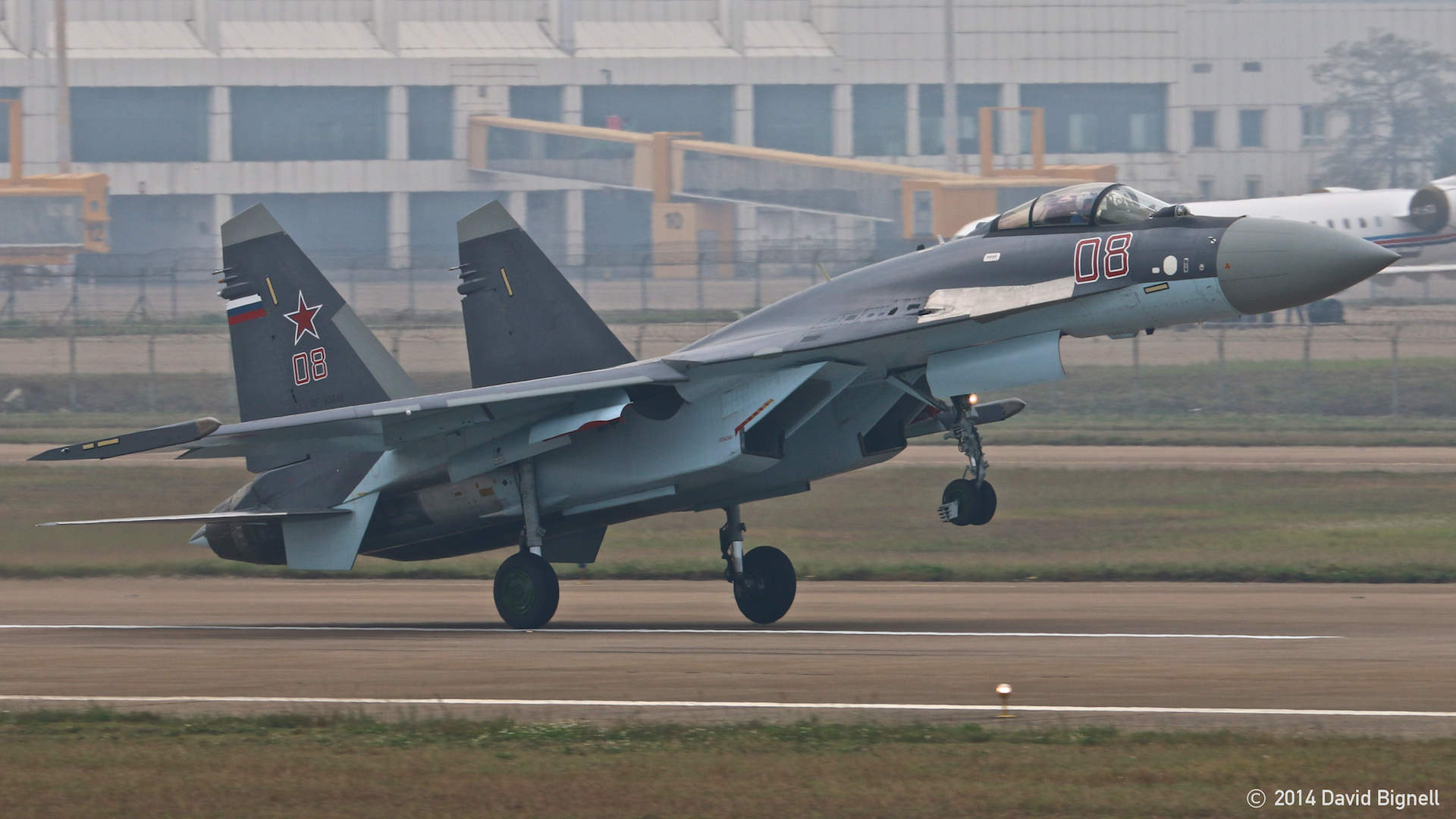  |
|
Xian H-6M BADGER 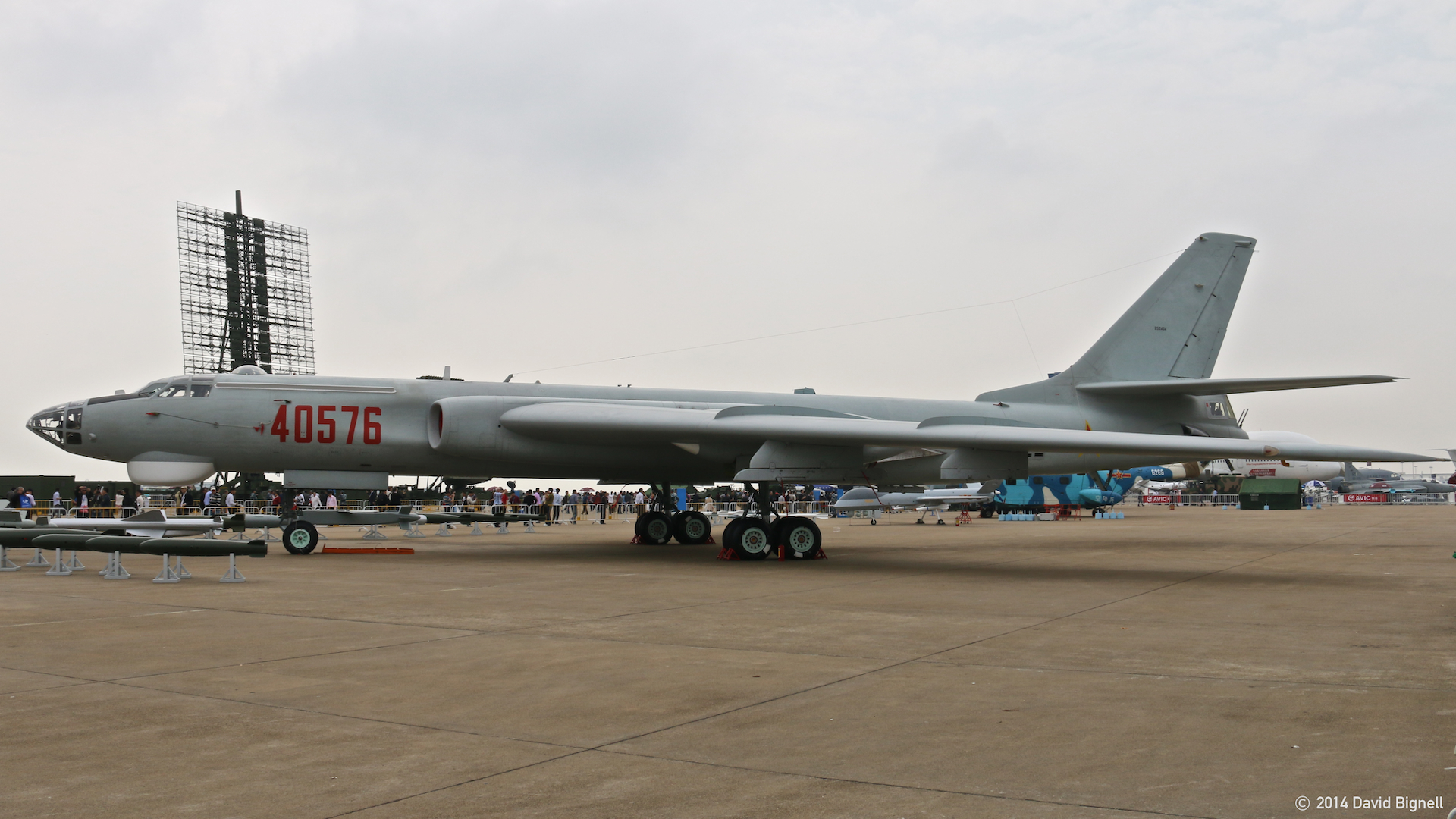 The Xian H-6M is a recent new production multirole variant of the resuscitated H-6 BADGER. Other than revised avionics to support a range on new guided munitions, this variant is notable for the use of additional outboard pylons for the carriage of up to four large external weapons. Of interest is that the Zhuhai display presented a wide range of guided munitions for this aircraft, with airshow placards detailing no less than six guided bomb types, two guided glide-bomb types, two guided submunition dispensers, and a standoff missile as compatible with the H-6M. |
|
KJ-2000 AWACS 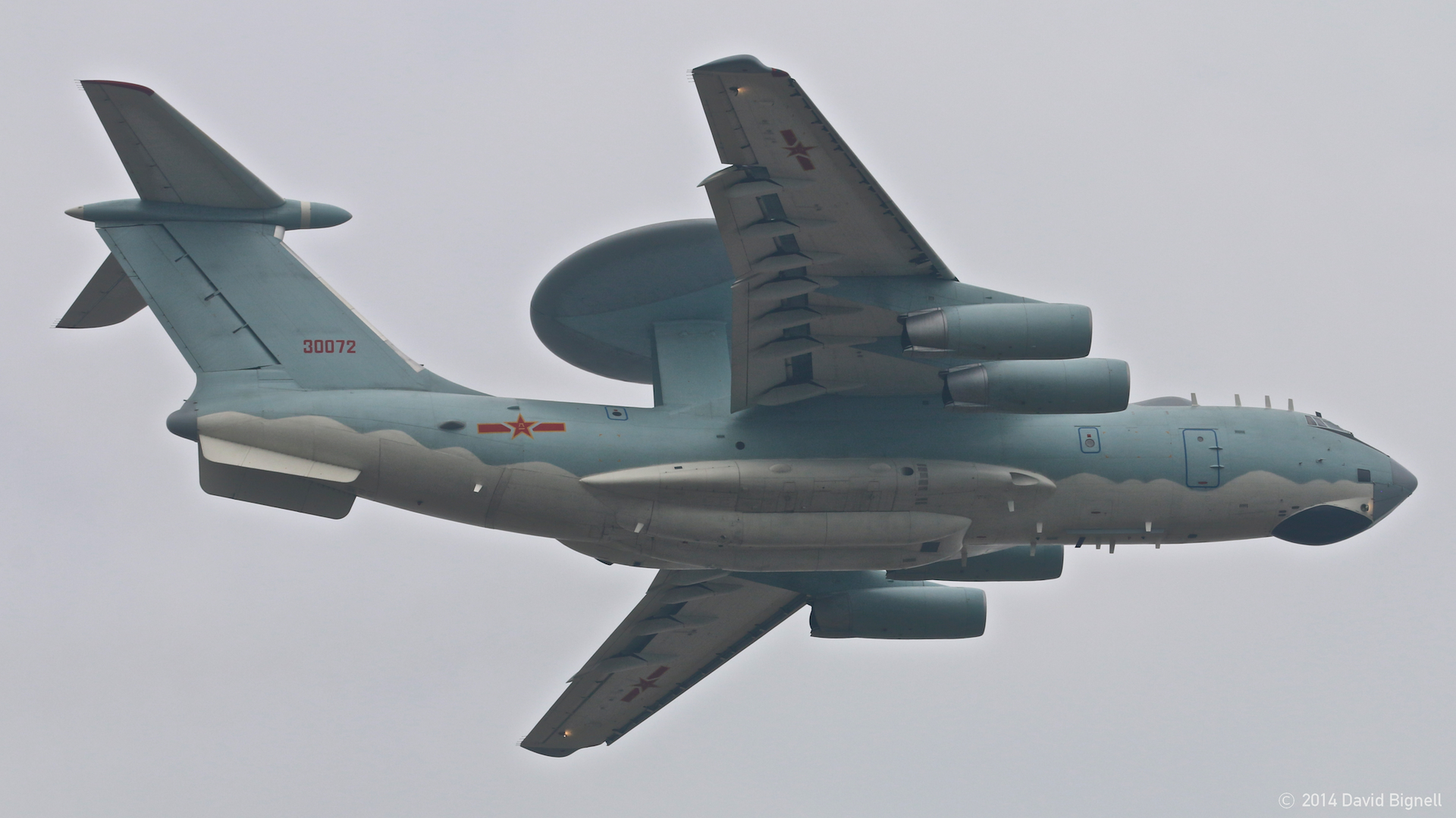 The KJ-2000 AWACS is now considered
a fully operational asset in the PLA-AF. The aircraft uses a uniquely
modified Russian Ilyushin Il-76M CANDID airframe.
|
|
Shaanxi Y-9  The Y-9 is the latest derivative
of the Y-8F airframe, itself a derivative of the Soviet era Ukrainian
designed An-12 CUB airlifter. The Y-9 is widely regarded to be a
Chinese equivalent to the C-130J Hercules.
 |
|
Xian Y-20  The new Xian Y-20 airlifter is
very close to the Il-76M CANDID theatre airlifter in size, weights and
performance, but is closer to the Boeing C-17A in configuration. In
practical terms, it provides around 2/3 of the capability of a C-17A.
 |
|
Precision Guided Munitions 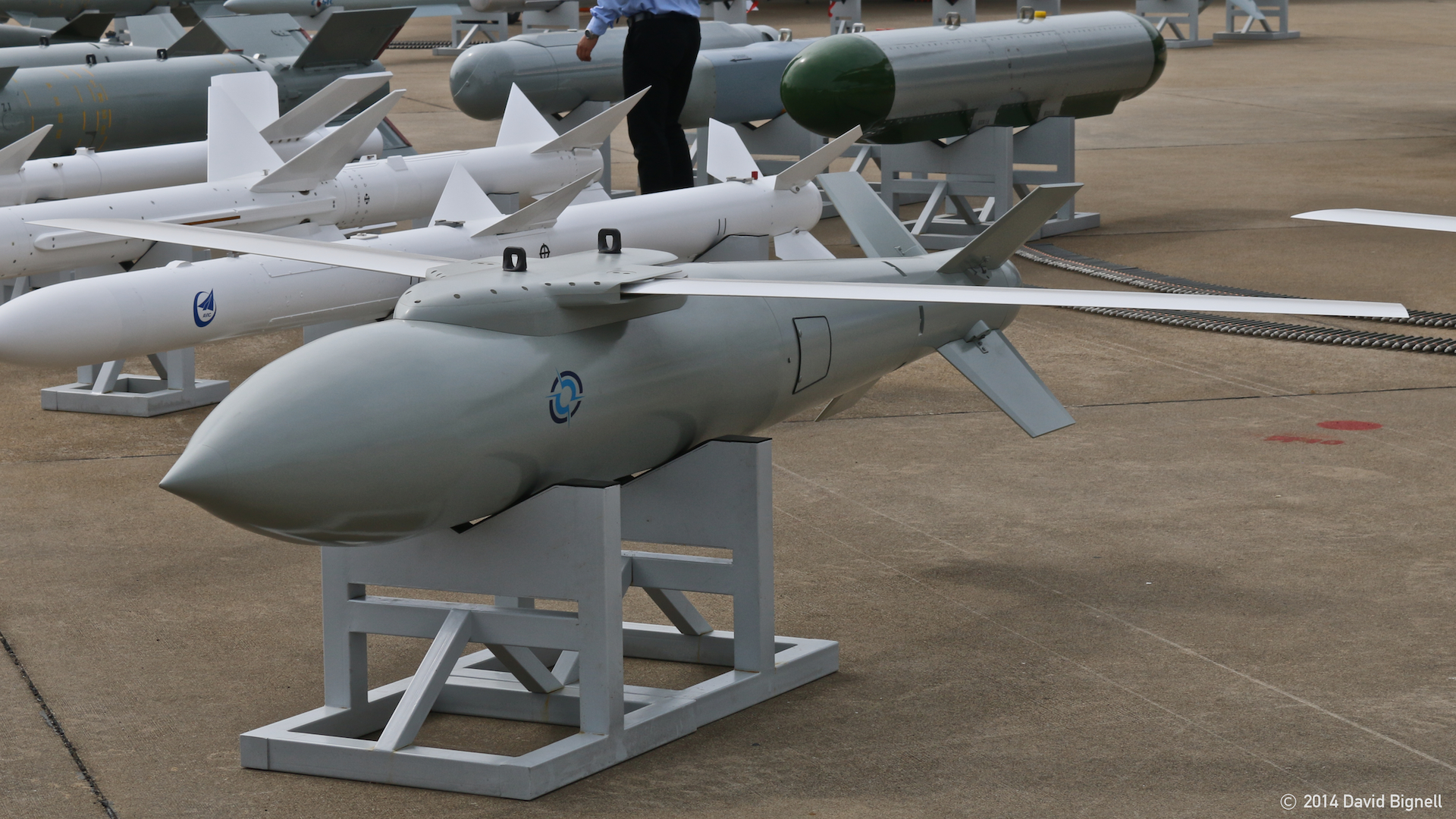 The CASC FT-2 Satellite Aided
Inertially Guided Glide-Bomb was first disclosed five years ago,
when mockups were displayed at several industry events. The display
item depicted is in production colours.
 The first two weapons in this
lineup are the recently disclosed Norinco GB6/TL500 1,000 lb gliding
submunition dispenser, clearly modelled on the European DWS-24 dispenser, and the
TG1000 2,000 lb Laser Guided Bomb, clearly modelled on the GBU-24 Paveway III series, and using a
similar P-nav seeker to the earlier
LT-3. The tubular
TG1000 warhead casing is typical for concrete penetrating warheads.
 The LT-2 (Ler Ting 2) LGB is
China's first volume production guided bomb. The basic bomb kit is
sized for a 500 kg / 1,000 lb class general purpose bomb body. The
seeker uses a Paveway I/II style annular airfoil seeker with a
conventional quadrant detection assembly.
 The glide weapon in the foreground
was not identified by designation on the Zhuhai placards, but described
as a loitering anti-radiation weapon. In the background are,
consecutively, the LT-2, an undesignated missile, a planar wing C-802A
derivative, a 200 kg concrete piercing anti-runway munition,
a
2,000 lb dumb bomb, and the CM-800 series standoff weapon.
 This view of the H-6M weapons
suite shows the CS/BBF1 500 lb Fuel Air Explosive (FAE) bomb, and the CM-802A
standoff
weapon, in the foreground.
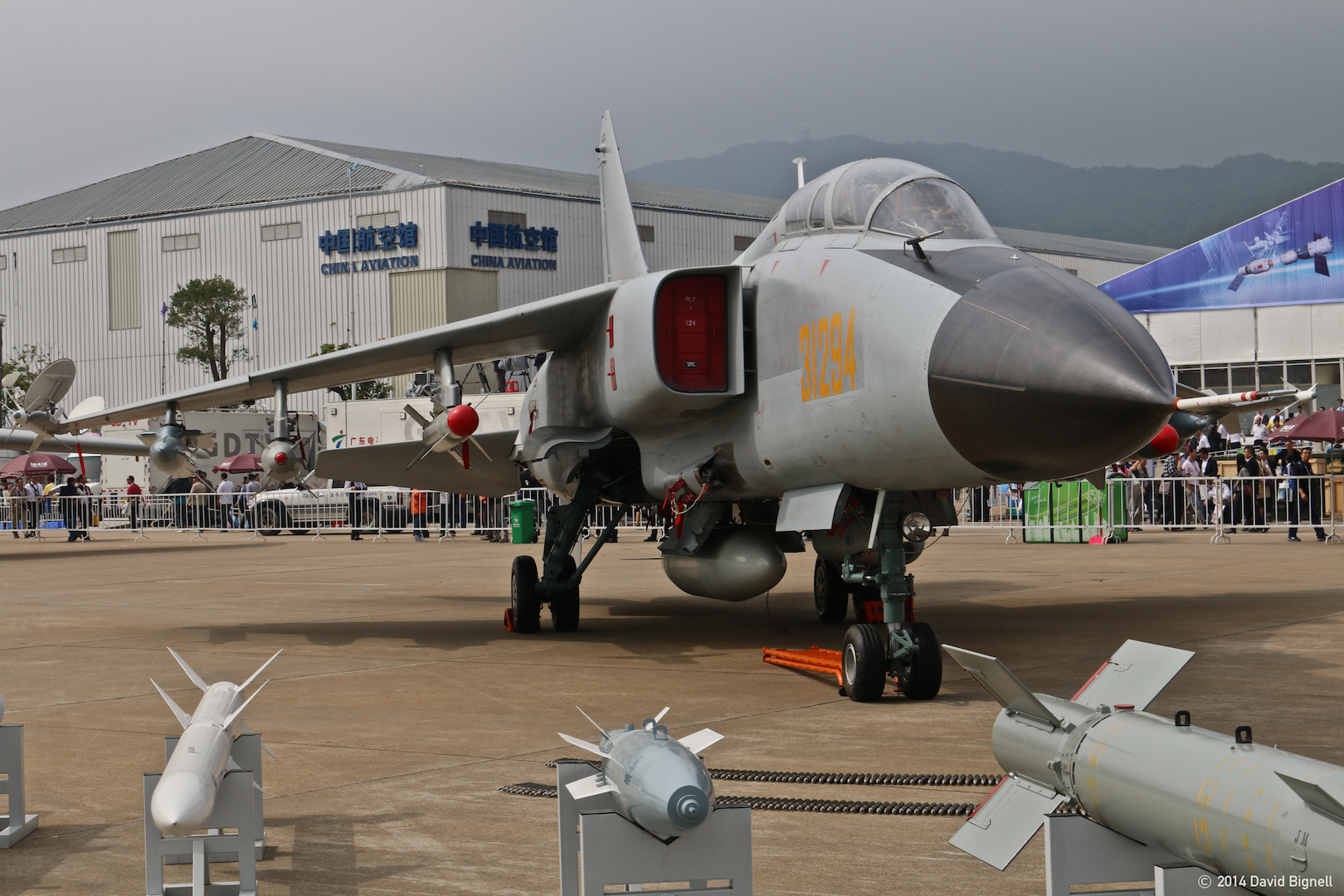 This JH-7A FLOUNDER display shows,
left to right in the foreground, the LD-10 Anti-Radiation
Missile, based on the LETRI
SD-10/PL-12 “Sino-AMRAAM” airframe, the
revised configuration of the CASC FT-3, and an LT-2 LGB. The wing
pylons carry a glide-bomb, laser guided bomb, and inboard, an
electro-optically guided canard bomb kit.
 The Chengdu Pterodactyl / Wing
Loong RPV is modelled on the configuration of the US General Atomics
Predator/Reaper series, and is similar in weight and size.
|
 |
|
|
|
Imagery Sources: © 2015 David Bignell |
|
|||||||||||||
![Sukhoi PAK-FA and Flanker Index Page [Click for more ...]](APA/flanker.png) |
![F-35 Joint Strike Fighter Index Page [Click for more ...]](APA/jsf.png) |
![Weapons Technology Index Page [Click for more ...]](APA/weps.png) |
![News and Media Related Material Index Page [Click for more ...]](APA/media.png) |
||||||||||
![Surface to Air Missile Systems / Integrated Air Defence Systems Index Page [Click for more ...]](APA/sams-iads.png) |
![Ballistic Missiles and Missile Defence Page [Click for more ...]](APA/msls-bmd.png) |
![Air Power and National Military Strategy Index Page [Click for more ...]](APA/strategy.png) |
![Military Aviation Historical Topics Index Page [Click for more ...]](APA/history.png)
|
![Information Warfare / Operations and Electronic Warfare Index Page [Click for more ...]](APA/iw.png) |
![Systems and Basic Technology Index Page [Click for more ...]](APA/technology.png) |
![Related Links Index Page [Click for more ...]](APA/links.png) |
|||||||
![Homepage of Australia's First Online Journal Covering Air Power Issues (ISSN 1832-2433) [Click for more ...]](APA/apa-analyses.png) |
|||||||||||||
| Artwork, graphic design, layout and text © 2004 - 2014 Carlo Kopp; Text © 2004 - 2014 Peter Goon; All rights reserved. Recommended browsers. Contact webmaster. Site navigation hints. Current hot topics. | |||||||||||||
|
Site Update
Status:
$Revision: 1.769 $
Site History: Notices
and
Updates / NLA Pandora Archive
|
|||||||||||||
|
|
Tweet | Follow @APA_Updates | |||||||||||
|
|
|||||||||||||
|
|
|||||||||||||
![F-111 Aardvark Index Page [Click for more ...]](APA/f-111.png)
![F/A-18 Hornet and Super Hornet Index Page [Click for more ...]](APA/fa-18a.png)
![Aerial Refuelling and Airlift Capabilities Index Page [Click for more ...]](APA/aar-lift.png)
![Directed Energy Weapons and Electromagnetic Bombs Index Page [Click for more ...]](APA/dew.png)
![Notices and Updates Index Page [Click for more ...]](APA/notices-128.png)
![APA NOTAM and Media Release Index Page [Click for more ...]](APA/notams-128.png)
![APA Research Activities and Policy / Technical Reports Index [Click for more ...]](APA/research-128.png)
![Search Air Power Australia Website [Click for more ...]](APA/search-128.png)
![Briefings and Submissions - Air Power Australia [Click for more ...]](APA/briefs-128.png)
![Air Power Australia Contacts [Click for more ...]](APA/contacts-128.png)
![Funding Air Power Australia [Click for more ...]](APA/funding-258.png)
